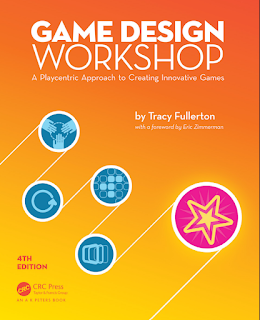Tracy Fullerton: Game Design Workshop part 2
Last time we sat down with Tracy Fullerton's Game Design Workshop I wasn't impressed. It seemed to me that it was very introductory for a textbook. I had hoped that this would be maybe a bit more in depth, but then I suppose that in such a technical world as game design I would expect that the really in-depth stuff would be found in a more technological space, rather than an old-fashioned textbook.
But I also said I would give it another shot, so today I am reading chapter 3: Working with Formal Elements.
Chapter 3, Part 1: Players
First thing is an activity about changing the rules to Gin Rummy, I have never played Gin Rummy so attempting to parse this activity just confused me, moving on. There's an interesting section here on the invitation to game and the way this allows for players to move into a different head space where they are open to act in ways the usually wouldn't. It seems to me that this is mostly applicable to board games or other games played in person rather than online or single player video games. The textbook even mentions that in digital gaming this is a slightly different situation. It does call out the guitar hero guitars as a great example of being invited to play, where the plastic peripherals invite the player to not only play the game but act like a guitar hero. I agree that this is a great example, and an interesting concept, but the example works because of the ways it isn't like most video games.
Next there is a section on the way games are defined by their player count. Followed by an activity to invent a Tic-Tac-Toe game for three players, maybe I'm not taking this in the spirt expected of me but this seems pretty simple, you just need a 3rd player and tokens in their colour, add them to the turn order and there we go. Despite the activity I agree that expected player count is a massive part of defining a game.
The next part to bring up is easily the most interesting thing I have read in this textbook so far, Player Interaction Patterns.
- Fable
- Baldur's gate 2
- PlaneScape: Torment
- Fallout 1,2,3,& NewVegas
- Morrowind
- DeusEx
- StarCraft
- Age of Empires
- Supreme Comander
- Street fighter
- Bushido Blade
- Nidhog
- Halo Deathmatch
- Quake
- Doom
- DarkSouls co-op
- Halo co-op
- Gears of War co-op
- Cuphead
- Castle Crashers
- Deeprock Galactic
- Vermin Tide
- Left for Dead
- Chivalry
- Day of Defeat
- DOTA
- Halo Team Deathmatch




Comments
Post a Comment